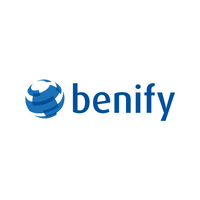How to cater for all employee age groups when it comes to benefits
It doesn’t matter whether it’s a start-up, a small to medium sized company, or a large multinational enterprise when it comes to the age of your workforce.
Some companies might actively recruit young candidates as they will be hungrier to climb up the company’s career ladder, whereas others will prefer older, more experienced, candidates that can bring a wide range of skills. Of course, there are companies that will be the most typical example of having a mixed workforce when it comes to ages, with some employees starting out and others close to retirement.
How does a company handle total rewards and benefits when there are obvious generational gaps between employees?
For young employees:
Talent acquisition has become a problem during the pandemic and hybrid/remote working has become part of the normal work practice. Offering a generous total reward and benefits package that includes simple things such as gym membership, insurance and retail discounts are key when attracting the younger generation of employees.
For older employees:
The same total rewards and benefits should be available to the older generation of workers, but with one exception: when it comes to thinking about retirement. According to credit management company, Lowell, 17% of British employees are delaying their retirement by at least five years because of debt, with a further 12% thinking about waiting another 10 years at least. In the USA, a recent survey by the Nationwide Retirement Institute says that 30% of people over 65 expect to postpone their retirement by three years. The survey added that “these delayed retirements are negatively affecting workers and business”, citing employee mental health and company productivity.
Catering for a broad spectrum of employee ages is crucial
In much of the advice published online, it’s clear how benefits are key for employee retention, but a spotlight should also be shone on how important it is to support all workers when it comes to their financial wellbeing, especially in times of high inflation. For young employees, a health and wellness contribution could really make a difference to them, but what about older employees?
Jonathan Watts-Lay, director at WEALTH at Work, a UK financial wellbeing and retirement company, stresses that it’s becoming increasingly important to support workers are thinking about retirement – including employees aged 45+, who may feel confused about their current financial state and feel they might not be able to ever retire.
Watts-Lay says, “Employers play a key role in ensuring that employees make informed choices at the point of retirement. Financial education and guidance are imperative for employees to help them to understand their options and any red flags to look out for.”
Create a mobile-first, digital HR platform
The best way to tackle total rewards and benefits across your entire workforce, regardless of age, is through a mobile-first, digital HR platform. The first step is to create a communication channel that first addresses the whole organisation, but also each employees’ own specific needs. No matter the age of an employee, the communication should be simple, trustworthy and, when it comes to the subject of retirement, shouldn’t wait until an employee is approaching retirement. Through a digital HR platform, it’s a good idea to create online videos about insurances and pension schemes, but also make it possible for employees to book face-to-face meetings if need be.
A digital HR platform usually brings tangible improvements across the board. If the company is offering decent rewards and benefits, and a younger employee feels they are getting more than just their wage, they are more likely to stay at that company and be more productive. Likewise, if older employees feel they are having their needs met when it comes to issues like, for example, pensions and insurance, and feel that they have ownership, they feel more relaxed.
Communication has to be simple, straightforward and shouldn’t be condescending. Every employees’ situation is different, so communication needs to be tailored to each individuals’ needs. Take the stress out of employee worries before they manifest and take hold.
Original article: How does a company cater for all employee age groups when it comes to benefits?
Supplied by REBA Associate Member, Benify
Benify offers the market's leading global benefits and total reward platform.








